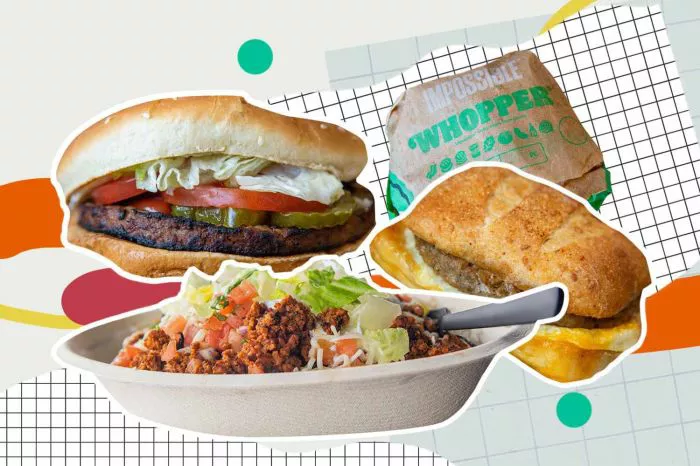Sandwiches are a versatile and popular food choice enjoyed by people worldwide. They consist of various ingredients layered between slices of bread, making them convenient, customizable, and suitable for any meal of the day. The healthiness of a sandwich largely depends on the type of bread, fillings, and condiments used. Let’s explore the nutritional aspects of sandwiches, discuss healthy ingredient choices, and provide tips on how to make a nutritious and balanced sandwich.
Components of a Sandwich
A typical sandwich includes:
Bread: The base of a sandwich, which can range from whole-grain options like whole wheat, rye, or multigrain to refined varieties such as white bread or wraps.
Fillings: Proteins (e.g., meats, poultry, fish, tofu, beans), vegetables (e.g., lettuce, tomatoes, cucumbers, bell peppers), and spreads (e.g., hummus, mustard, mayonnaise) add flavor, texture, and nutritional value.
Condiments: Sauces and spreads (e.g., ketchup, mustard, mayonnaise, pesto) enhance taste but can also contribute additional calories, sodium, or sugar.
The Nutritional Profile of Sandwiches
The nutritional value of a sandwich varies greatly depending on its ingredients. Here’s an overview of the potential health benefits and considerations of common sandwich components:
Bread
Whole Grain: Whole-grain breads provide fiber, vitamins, and minerals that are stripped away in refined bread. They contribute to better digestive health and may help lower the risk of chronic diseases like heart disease and diabetes.
White Bread: While lower in fiber compared to whole-grain options, white bread can still be part of a balanced diet when consumed in moderation.
Fillings
Proteins: Lean proteins like grilled chicken, turkey, tuna, or tofu add essential amino acids without excess saturated fats.
Vegetables: Fresh vegetables provide vitamins, minerals, fiber, and antioxidants. They contribute to satiety and add volume and crunch to sandwiches.
Cheese: While cheese adds flavor and protein, it can also be high in saturated fats and sodium. Opt for lower-fat varieties or use sparingly.
Processed Meats: Cold cuts and cured meats are convenient but often high in sodium and preservatives. Limit consumption and opt for leaner, low-sodium options when possible.
Condiments
Mayonnaise: High in calories and fats, so use sparingly or consider lighter alternatives like mustard, hummus, or Greek yogurt-based dressings.
Mustard and Pesto: Low in calories and can add bold flavors without excess sodium or fats.
Sauces: Be mindful of sugary or high-sodium sauces like ketchup or barbecue sauce. Use in moderation.
Tips for Creating a Healthy Sandwich
Choose Whole Grain Bread: Opt for whole-grain or whole-wheat bread, wraps, or pitas to increase fiber intake and promote digestive health.
Load Up on Vegetables: Add a variety of colorful vegetables like lettuce, spinach, tomatoes, bell peppers, onions, or cucumbers for texture, flavor, and added nutrients.
Select Lean Proteins: Use lean cuts of meat, poultry, or fish, or choose plant-based proteins like beans, tofu, or hummus to reduce saturated fat intake.
Limit High-Fat Fillings: Use cheese and spreads in moderation to avoid excessive calories and saturated fats.
Watch Portion Sizes: Pay attention to portion sizes, especially with calorie-dense ingredients like cheese, spreads, or processed meats.
Balance Flavors: Experiment with herbs, spices, or vinegar-based dressings to enhance flavor without relying on excessive salt or sugar.
Health Benefits of Sandwiches
When made with wholesome ingredients, sandwiches can be part of a balanced diet offering several health benefits:
Convenience: Sandwiches are quick and easy to prepare, making them a convenient option for busy individuals or families.
Nutrient Diversity: By incorporating a variety of ingredients like whole grains, proteins, and vegetables, sandwiches can provide a range of essential nutrients.
Portion Control: The structure of a sandwich allows for portion control by limiting the amount of bread and controlling the type and quantity of fillings.
Satiety: The combination of protein, fiber, and healthy fats in a sandwich can promote feelings of fullness and satisfaction.
Considerations for Healthier Sandwich Choices
To maximize the nutritional value of sandwiches, consider the following tips:
Homemade vs. Store-bought: Making sandwiches at home allows for full control over ingredients and portion sizes, reducing the intake of added sugars, fats, and preservatives.
Read Labels: When purchasing pre-packaged bread, meats, or condiments, read labels to choose options lower in sodium, sugar, and unhealthy fats.
Portion Control: Be mindful of portion sizes, especially with calorie-dense ingredients like cheese, spreads, or processed meats.
Include a Side Salad or Fruit: Pair sandwiches with a side salad, fresh fruit, or vegetable sticks to increase fiber and nutrient intake.
Stay Hydrated: Enjoy sandwiches with water or other low-calorie beverages instead of sugary sodas or juices.
Conclusion
In summary, the healthiness of a sandwich depends on the ingredients used and portion sizes. By choosing whole-grain bread, lean proteins, plenty of vegetables, and mindful condiments, sandwiches can be a nutritious and satisfying meal option. They offer convenience, versatility, and the opportunity to incorporate a variety of nutrients into your diet. When enjoyed as part of a balanced meal plan, sandwiches can contribute to overall health and well-being. However, it’s important to be mindful of portion sizes and ingredient choices to optimize nutritional value and support a healthy lifestyle.

